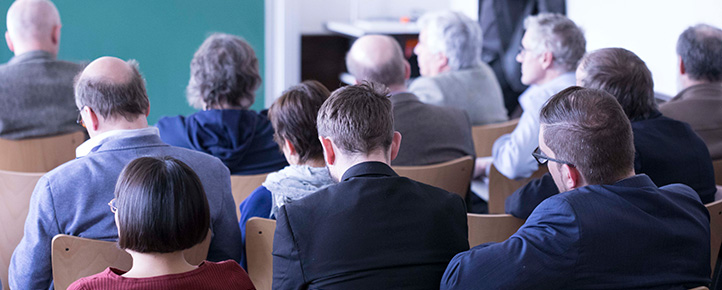Demian Battaglia: Neuronal dynamics and dynamics of information
| When |
Jan 21, 2021
from 05:15 PM to 06:00 PM |
|---|---|
| Where | Zoom Meeting. Meeting ID and password will be sent with the e-mail invitation. You can also contact Fiona Siegfried for meeting ID and password. |
| Contact Name | Fiona Siegfried |
| Contact Phone | 0761 203 9549 |
| Add event to calendar |
|
Abstract
The dynamics of neural circuits give rise to diverse and rich patterns of coordinated activity, such as changing temporal and spatial firing correlations or varying synchronisation between coupled populations. It is not however always clear that the formation and reconfiguration of these coordinated activity patterns results in specific information processing operations being performed. Information theory provides tools able to decompose any ongoing, unknown, information processing into elementary operations such as "storage", "copy", "transfer" or "modification". These primitive information manipulation operations could be seen as part of a neuronal assembly language out of which more complex, arbitrary computations could emerge. Ideally, one could thus hope to establish a mapping between, on one side, patterns of coordinated activity (building blocks of high-dimensional neural dynamics) and, on the other, specific blends of primitive processing operations (building blocks of computations).
First, we analyse the relations between neuronal dynamics and dynamics of information in computational models involving a few coupled brain regions. We thus find that events of transient synchronisation between coupled populations with alternative possible phase relations correspond to transient boosting of information transfer between the populations in alternative directions. Considering the dynamics of simple models of precise cognitive functions, we then detect specific subsets of neuronal units performing, e.g., information "storage" or "modification", respectively in association with the implementation of working memory or top-down attentional modulation.
Second, we characterise primitive processing operations eventually enacted by individual neurons in hippocampal and cortical rodent recordings in anaesthesia and natural sleep. While no specific behaviours are performed in these conditions, whose relative stability is ideal for the application of sophisticated analyses, a rich collective neuronal dynamics is still present, possibly associated to an intrinsic potential for computation. We find indeed that a multiplicity of "information processing states" exist in which different neurons specialise in different elementary computing operations. Information processing roles are not hardwired, as different neurons can swap roles through different times and states. Sequences of information processing states are neither ordered or random, but display a complexity which is modulated by global oscillatory states. Finally, we also compare recordings in control and epileptic rats, showing that, in epilepsy, beyond the existence of seizures, the spatiotemporal organisation of coordinated neuronal firing –and of the associated information dynamics– gets degraded, with structured complexity being replaced in part by increased randomness.
Although preliminary, our results suggest the feasibility of analyses at an intermediate, algorithmic level, between structure and actual functions –that may well be unknown–, in which the plainness and possible universality of the considered processing operations make possible to tightly map dynamic patterns and the primitive computations they produce.
References
[1] Pedreschi N, Bernard C, Clawson W, Quilichini P, Barrat A, Battaglia D. Dynamic core-periphery structure of information sharing networks in entorhinal cortex and hippocampus. Netw Neurosci. 2020;4: 946–975.
[2] Clawson W, Vicente AF, Ferraris M, Bernard C, Battaglia D, Quilichini PP. Computing hubs in the hippocampus and cortex. Sci Adv. 2019;5: eaax4843. Palmigiano A, Geisel T, Wolf F, Battaglia D. Flexible information routing by transient synchrony. Nat Neurosci. 2017;20: 1014–1022.
More about the speaker and his research:
Demian Battaglia
Hosted by
Ulrich Egert


